Spawn to be wild
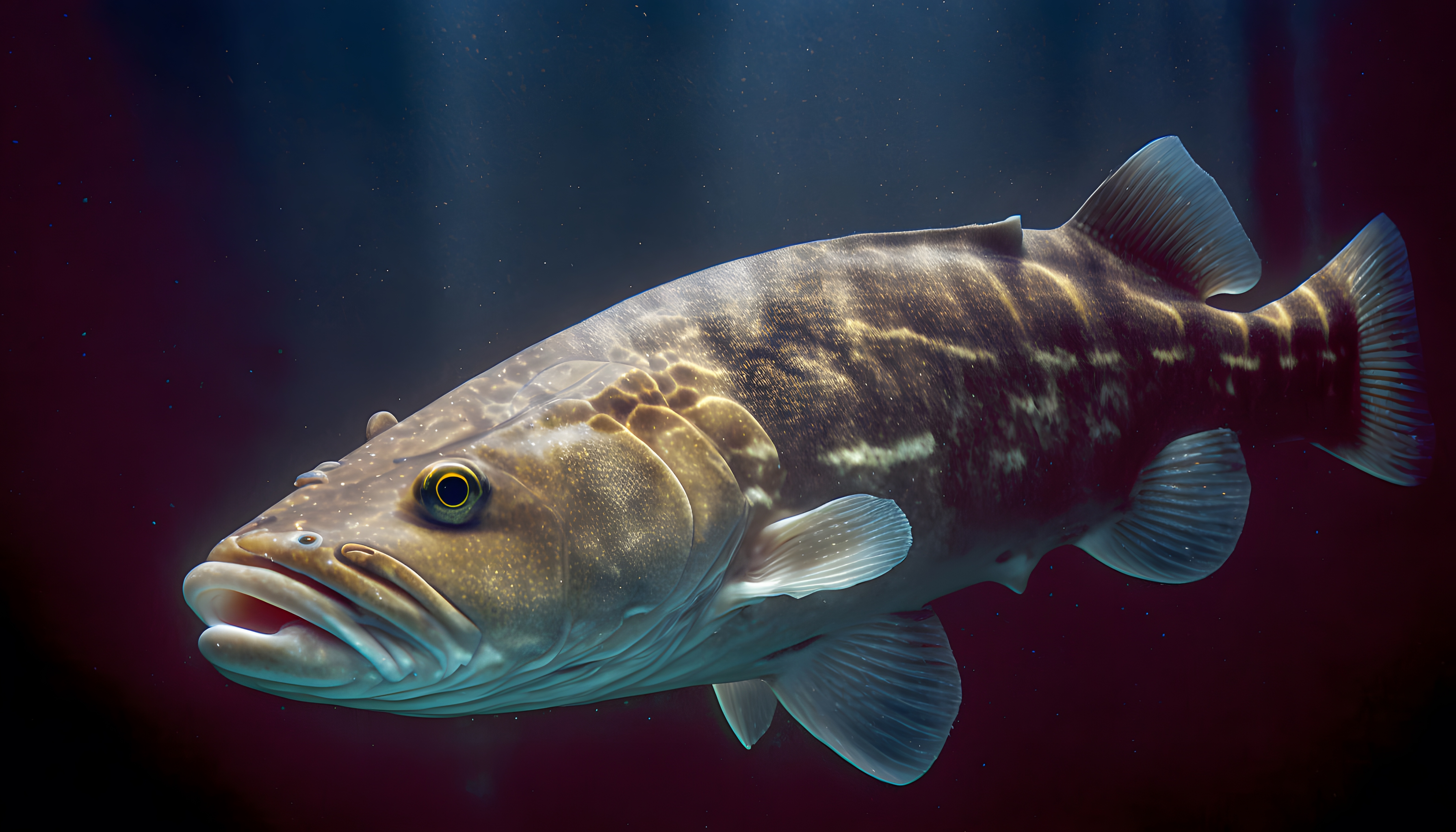
Selective breeding means farmed cod are less likely to spawn multiple times, research from Nofima suggests
After several attempts in the past, cod farming on a commercial scale is on the rise in Norway, helped no doubt by high prices and tight quotas for wild caught cod.
Norwegian research institute Nofima has been carrying out research into two areas of great interest to cod farmers: early spawning and the impact of temperature on cod health.
Compared with salmonids, farming cod presents some particular challenges and one of these is the propensity of this species to spawn. Earlier this year, for example, Norcod was required to slaughter large numbers of its cod because they had reached sexual
maturity early.
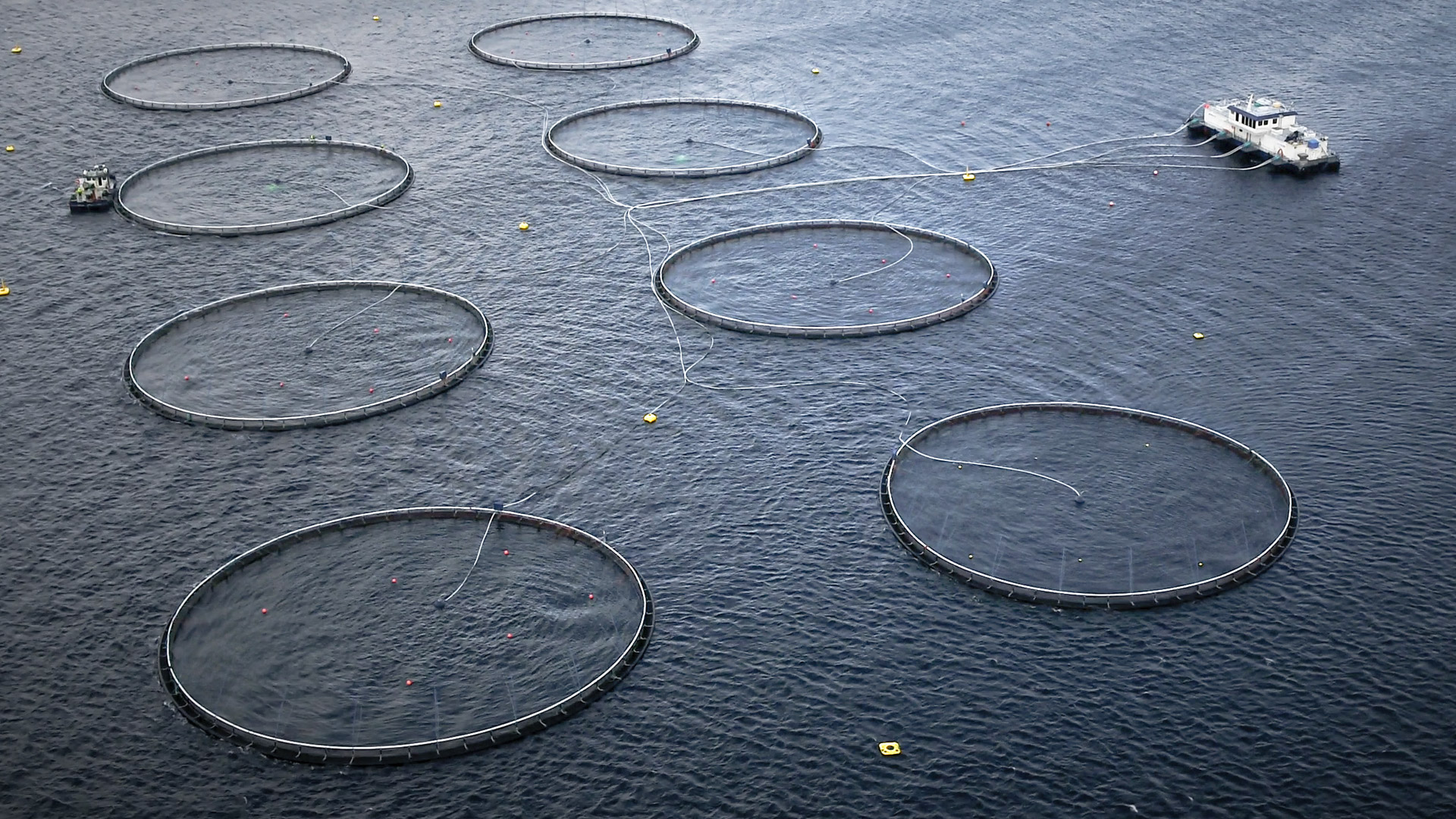
Norcod farm, Norway
Spawning is undesirable in fish farming. For the farmer, spawning means reduced growth. For the environment, meanwhile, there may be a risk of spreading fertilised eggs in the sea that could cross with wild fish in the following generation.
Previously, farmed cod in the breeding programme could spawn three times before reaching harvest weight. After being selected for growth, they spawn once.
Many cod still reach sexual maturity prematurely if light cycles are not manipulated. In the industry however, development is controlled with light.
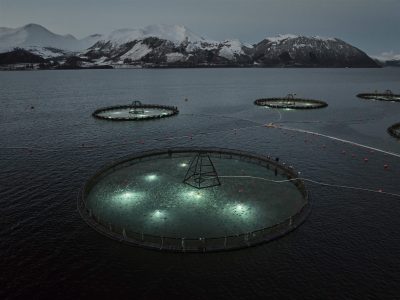
Ode uses light to delay cod maturity
Breeding for growth results in fewer spawnings
On behalf of the Ministry of Trade, Industry and Fisheries, Nofima runs the national breeding programme for cod and supplies fertilised eggs to cod farmers.
For six generations, the breeding goal has mainly been growth. Breeding for growth has reduced the number of cod spawnings during the 20 months at sea before slaughter weight from three down to one.
Sexual maturation reduces the availability of resources that can be utilised for rapid growth. Energy is relocated from muscles and liver to gonads. Sexual maturation results in the cod spawning.
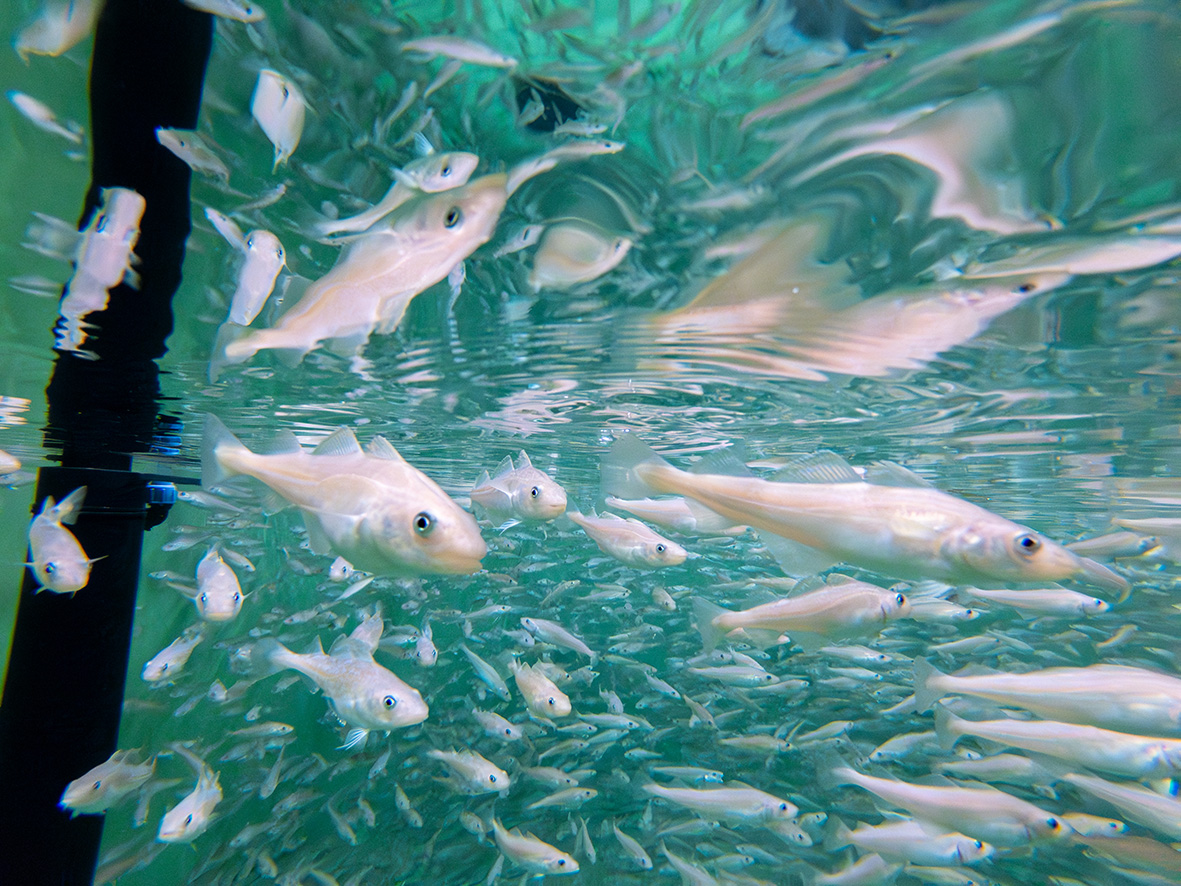
Cod, Nofima
Can be postponed?
While it is a prerequisite that cod spawn in a breeding programme, spawning is an undesirable trait in commercial farming. Therefore, Nofima wants to put an end to early sexual maturation.
Recently, Nofima breeding scientist Anne Kettunen led a major trial. She tested the extent of early sexual maturation on more than a hundred full-sibling families in net-pens in Nordland. The study showed that 84% of females and 91% of males reached sexual maturity at two years of age when they were not managed with light. Calculations show that there is considerable genetic variation in early sexual maturation in cod. Nofima estimates that 33% of the trait depends on genes, the rest on the environment.
Kettunen says: “This means that it is possible to breed for lower frequency of early sexual maturation and thus further reduce the risk of spawning in net-pens.
“In Nofima’s breeding work, we are looking for several solutions, where breeding is one of them. Of course, production management at the fish farms is also part of the solution.”
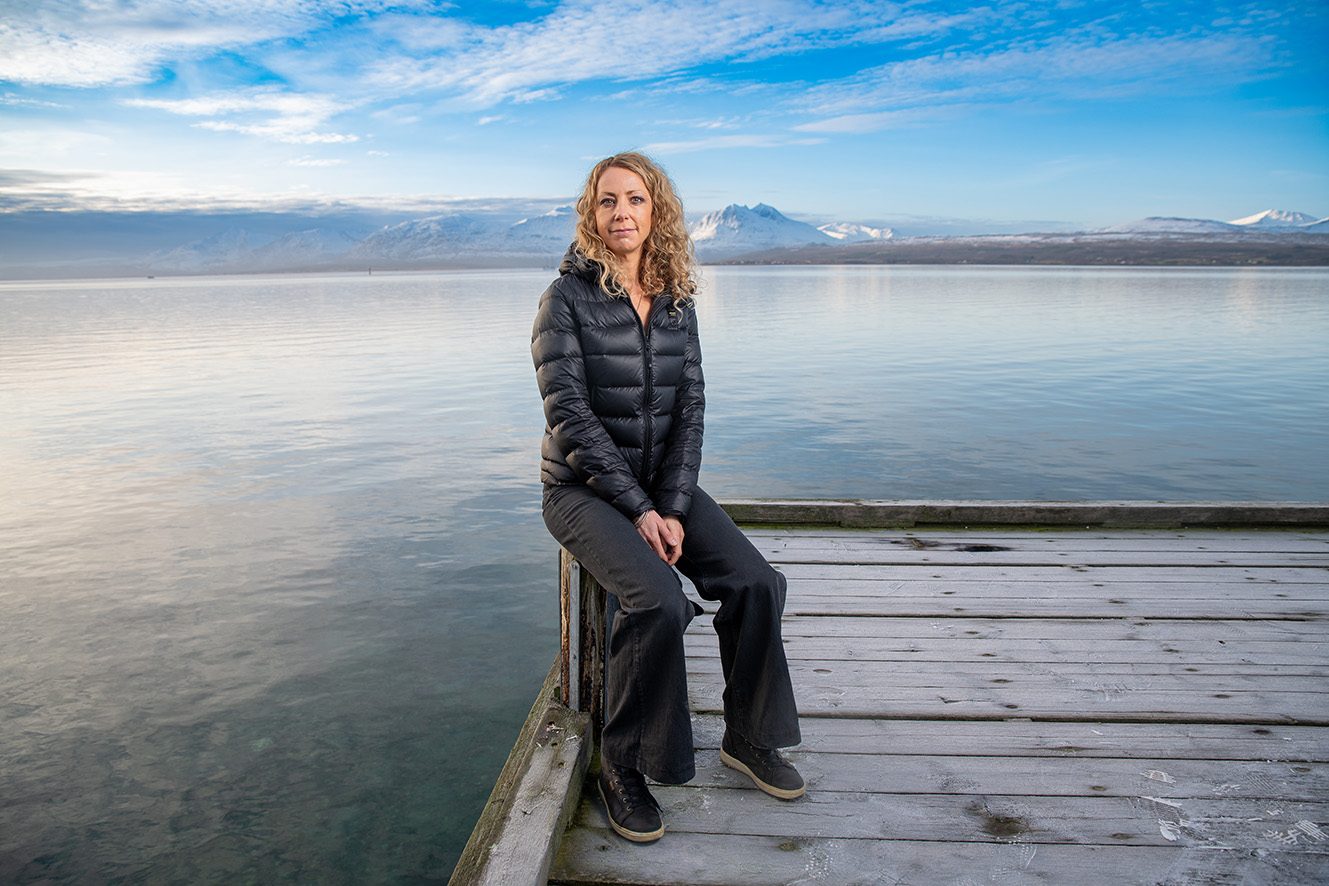
Elisabeth Ytteborg
Feeling the heat?
Meanwhile, Nofima is also looking to connect climate projections and fish health. Research provides practical knowledge that can benefit long-term operations.
“We look at the climate crisis under a microscope, because the details are important when implementing fish farming measures while temperatures are rising,” says Elisabeth Ytteborg, Senior Scientist at Nofima.
In her projects, the UN’s climate projections have been scaled down to site level. It shows that expected temperatures in 2030 can cause damage to fish skin.
The scientists chose a facility located at Dønna in Nordland county in the north of Norway. This facility has good data on cod farming and the environment.
The scientists wanted to study the impact of temperature on fish health and what happens if cod are infected with the Francisella bacterium.
Cod prefer temperatures between 8ºC and 13ºC. By 2030, the facility at Dønna may experience days above 17°C. They therefore studied the effect temperature had on cod skin at 12°C and 17°C.
The results showed that temperature has much more of an effect on barrier tissue functionality compared to infection with Fransicella bacteria.
At high temperatures, cod suffered damage between cells that bind the skin together. These skin bonds seem to affect the fish’s ability to heal wounds. Damage to them can make the fish more susceptible to other stresses.
In other words, the cod’s barrier system is weaker if it faces an extra challenge in addition to increased temperature.
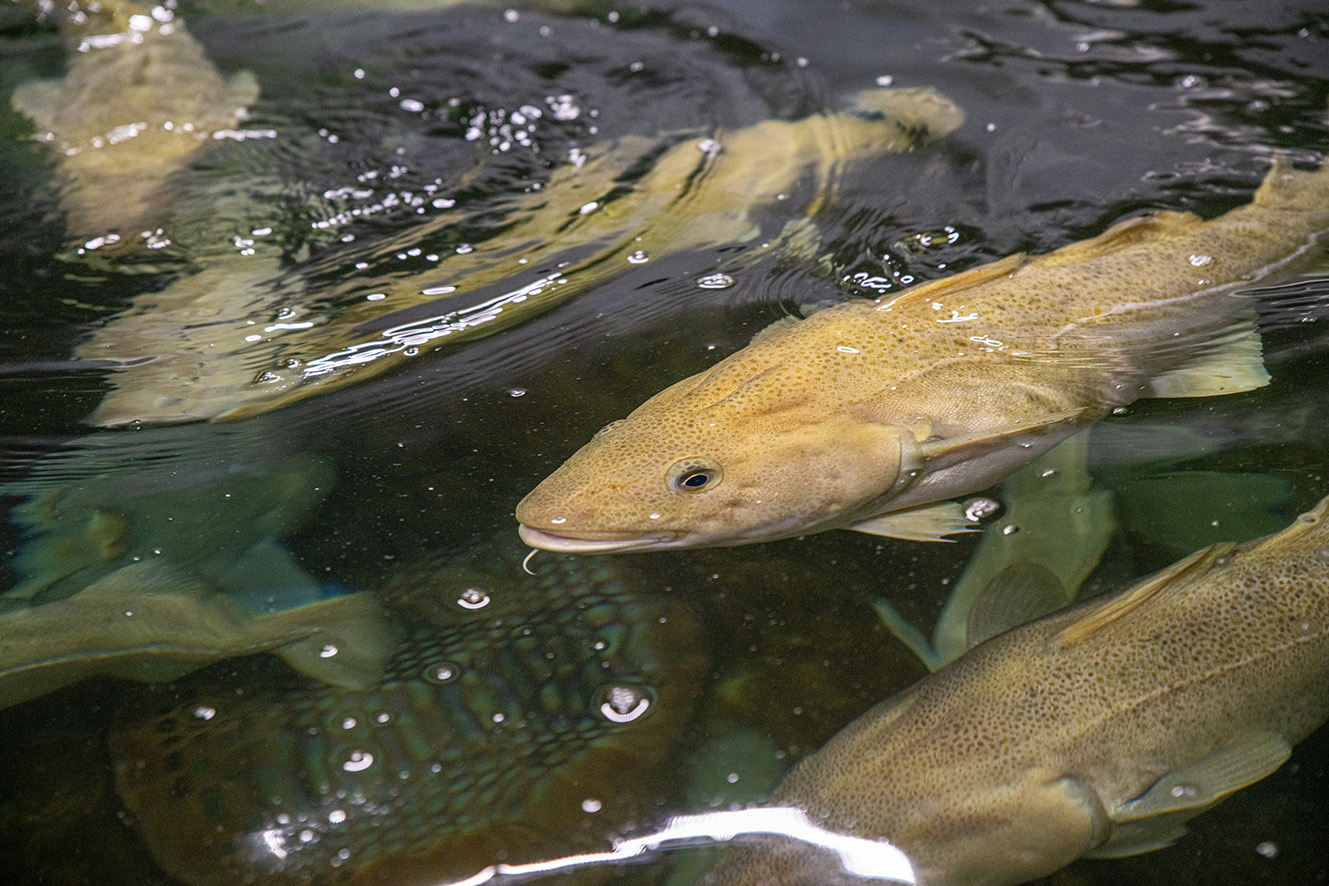
Cod in tank
What can be done about it?
Ytteborg says there are currently several cod farms further south in Norway, which can expect higher temperatures.
“The impact of high temperatures and how to deal with them will play a more important role in the future in line with climate change. How much the fish can tolerate will be important in finding good measures to safeguard fish health if the water becomes too hot,” says Ytteborg.
Ytteborg believes climate change must be taken into account when planning fish farming in Norway.
“We are releasing a publication on diversification, where we look at 36 different species and their temperature tolerance in relation to climate change. If Norway is going to have a longer-term diversification plan, one should definitely focus on temperature.”
The research is financed by Troms and Finnmark county authorities in Norway.

